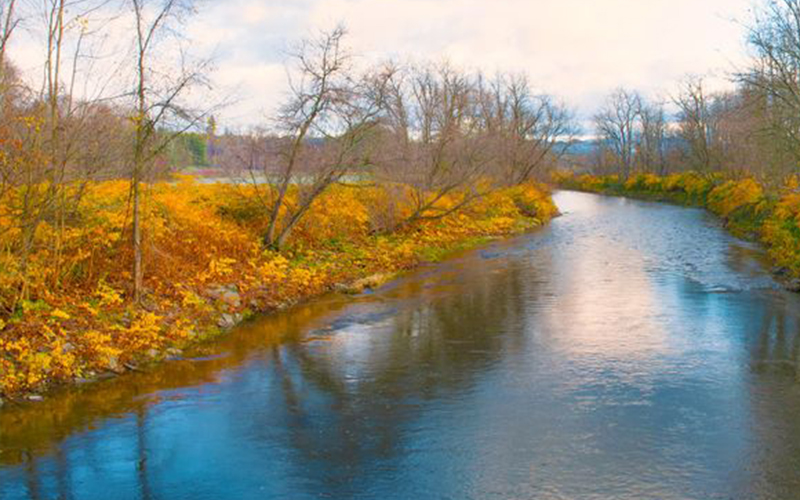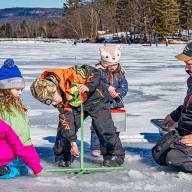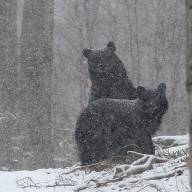The good news is that the efforts of local conservation commissions to manage knotweed in Warren, Waitsfield and Fayston has been successful to a great degree. The bad news is that the towns may need to consider the possibility of using herbicides (or goats) to get at the worst infestations.
“I can also tell you that all conservation organizations that are tackling knotweed have come to the conclusion that the use of herbicides in long run does less damage than leaving knotweed uncontrolled,” Waitsfield Conservation Commission chair Curt Lindberg told the board at its December 4 meeting
Lindberg reported that the conservation commission-led effort this summer included eight UVM interns and 21 community volunteer which led to great progress.
REVERSED THE SPREAD
He said that the work significantly weakened and reversed the spread of all knotweed infestations on the upper roadways and tributaries in The Valley.
“Clearly we’re beating that back,” he said.
‘Eighty-four percent of the sites where we’re working show significant weakening which allows us, with the same resources and manpower, to expand our reach by 60%,” he said.
In addition to that good news, Lindberg said having Fayston join the effort made a difference and also pointed out that the commission applied for a Lake Champlain Basin program grant to fund next year’s efforts and expects to hear this week.
“Another highlight is that we’re developing more sophisticated ways to measure the impact of our work. We selected about 30 sites in the three towns where we’re managing knotweed and marked off nine square-foot blocks. In those blocks, we’re measuring the number of stalks, the thickness of the stalks and whatever else is growing in these plots to better track our work over time,” he explained.
HUMAN INTERVENTION
Additionally, Lindberg said that the commission is starting to map locations of other invasive species, beginning with the Farley Riverside Park, formerly known as the Tardy parcel.
And with all these successes Lindberg said the measures beyond human intervention may be needed as the town continues to work on knotweed, especially with the addition of the 110-acre Fairgrounds property, which was donated to the town last month. That parcel abuts the Lareau swim hole and includes extensive riparian property where knotweed is widespread.
“Going forward we’re going to need some help from the town with the material that we’re removing. But if we’re seriously going to tackle knotweed along the Mad River, we’re going to need to look at something other than human effort. We’re looking at the possibility of using goats, but also the possibility of using herbicides,” Lindberg said.
OUTSIDE FUNDING
Select board member Chach Curtis asked about the timing of taking on the more extensive patches of knotweed along the Mad River and Lindberg said that that work was contingent on outside funding.
Lindberg said that tackling the knotweed along the Mad River on the Fairgrounds parcel would require not just more financial support but also a significant community conversation about a very controversial subject, herbicides.
“it’s not on the immediate horizon, and we will come up with some more detailed plans that we can share in community conversations and with the board,” he said.
PILOT PROJECT
In 2017, the town of Waitsfield, after extensive community conversations, public hearings, and research rejected a proposal to use the herbicide Rodeo, with glyphosate as its active ingredient.
At that time, the conservation commission proposed a pilot project to contain knotweed on the 5-acre Austin parcel where much of the manual knotweed management work has been focused.
In 2017, the select board approved a plan that called for using a combination of the herbicide Rodeo (active ingredient glyphosate) and Polaris (active ingredient imazapyr). It was to be applied in a backpack sprayer and with a motorized sprayer by the contractor Redstart Forestry.
It was one part of a plan to try to restore native species forest on the parcel to over-canopy and discourage knotweed and other nonnative invasives. The proposed project included mowing a buffer strip between the knotweed at the water’s edge and the field where trees would be planted. Knotweed was to be cut down in August and before the first frost, and the herbicides will be applied to it each time.
The town ultimately rejected that plan in favor of manual methods.













